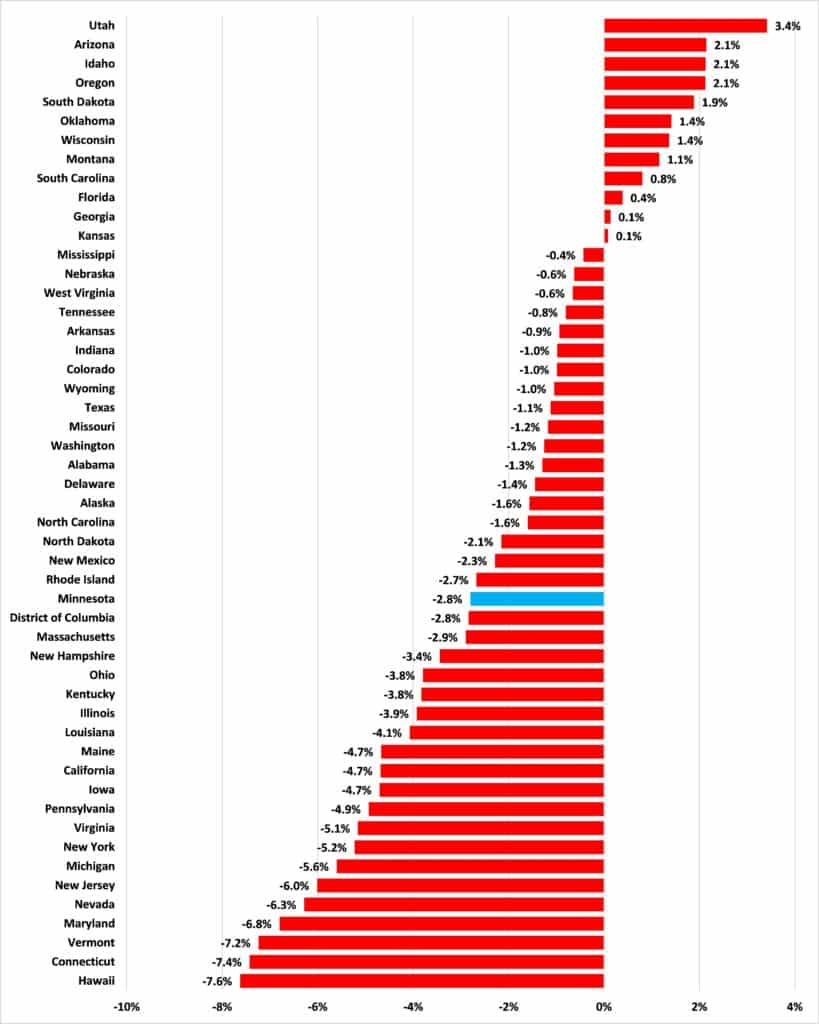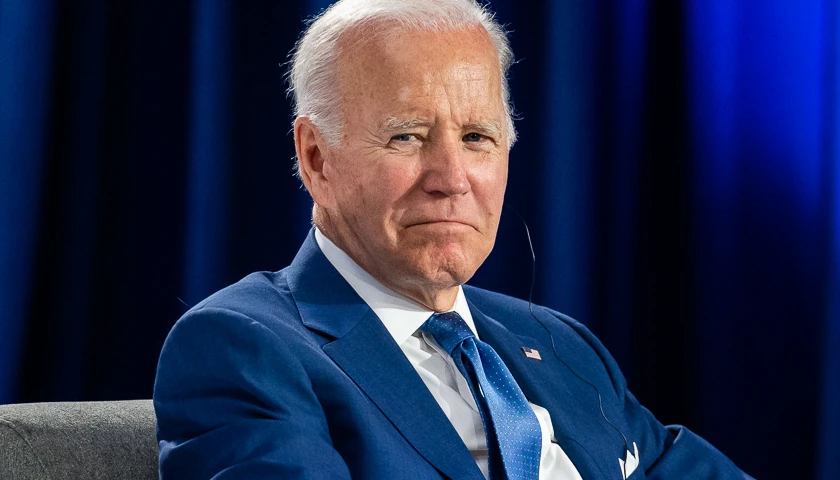by Jon Phelan
‘Minnesota job growth outpaces US, unemployment at 3.3%‘– Duluth News Tribune
‘Jobless rate in Minn. hits pre-pandemic level‘ – MPR News
‘Minnesota jobless rate falls to 3.3%, lowest since pre-pandemic‘ – Fox 9
‘Minnesota Unemployment Rate Fell in November‘– Twin Cities Business
(Center of the American Experiment) — These were some of the headlines in Minnesota’s media covering the monthly jobs data from the Bureau of Labor Statistics (BLS). They paint a pretty rosy picture. So what was the Minneapolis/St. Paul Business Journal reporting with this headline: ‘Minnesota unemployment rate continues to drop, but labor force concerns grow‘?
The numbers
As I’ve written before, the unemployment rate can be a somewhat misleading statistic.
The BLS divides Minnesota’s population up into those in the labor force and those who are not. Those Minnesotans who are either employed or unemployed but looking for work are deemed to be in the labor force.
The unemployment rate is calculated by dividing the number of people who are unemployed but looking for work by the total number of people in the labor force. Crucially, people who are unemployed and not looking for work are not counted in the labor force. Because of this, it is possible for the unemployment rate to fall without the number of people employed rising if people simply give up looking for work. So, to properly assess the employment situation in Minnesota we need to look at three things: changes in the number of people unemployed, changes in the number of people employed, and changes in the number of people not in the labor force at all.
Unemployment
BLS numbers show that Minnesota is actually one of 19 states with fewer people unemployed in November 2021 than were unemployed in February 2020, as Figure 1 illustrates. This would seem to be good news.
Figure 1: Change in total unemployment, February 2020 to November 2021

Employment
But this decline in total unemployment is not the result of increased employment. Indeed, as Figure 2 shows, Minnesota had 2.8 percent fewer people employed in November 2021 than it did in February 2020. Looking at the United States generally, employment was 2.6 percent lower in November 2021 than it was in February 2020 — Minnesota is lagging the nation in getting its jobs back.
Figure 2: Change in total nonfarm employment, February 2020 to November 2021

Out of the labor force
So, to account for a fall in the number of people both unemployed and employed we have to look at the number of people who have left the labor force completely. We can calculate this by subtracting the number of people in the labor force from the number for the civilian non-institutional population. Figure 3 shows that the number of people who are not in Minnesota’s labor force has increased by 9.2 percent between February 2020 and November 2021: this is the 8th largest increase in the United States.
Figure 3: Change in total not in the labor force, February 2020 to November 2021

Don’t go by the headlines
Look again at those headlines at the top of this post. None of them are technically incorrect, but they do give a misleadingly rosy picture of the recovery of Minnesota’s labor market. Yes, the total number of people unemployed and the share of the labor force unemployed have fallen to either below or to pre-pandemic levels. But this is not because of a vigorous recovery in employment, which has actually fallen. It is only because Minnesotans have been exiting the labor force at a rate greater than 42 other states and the District of Columbia.
The moral of this story is don’t believe the headlines.
– – –
John Phelan is an economist at Center of the American Experiment.





